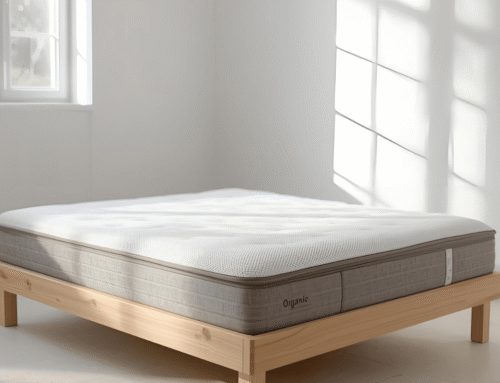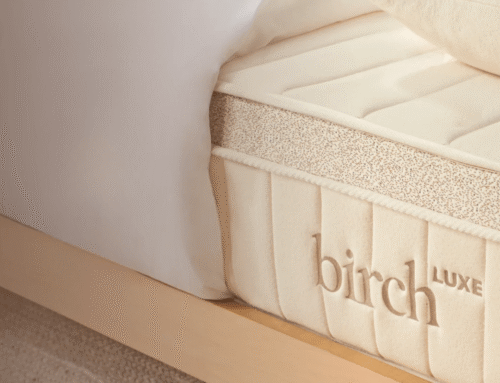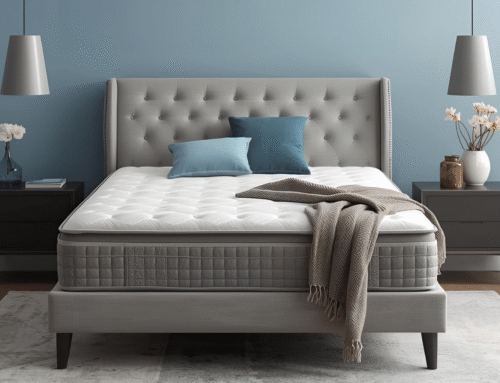Buying a mattress can be a bit confusing. Prices are all over the place, ranging from $200 to well over $5,000. So how do you know what’s actually worth paying for? The truth is, it really comes down to your personal needs, how you sleep, and how long you want the mattress to last. That’s where understanding how you can choose a mattress that fits your lifestyle makes all the difference.
The good news is you don’t need to break the bank for quality. Many lesser-known or “off-brand” companies offer fantastic mattresses that provide excellent comfort and support—often at a fraction of the cost of big-name brands. Knowing the best time to buy a mattress can also help you save even more. Let’s take a closer look at how much you should spend based on your sleep habits, preferences, and what you’re looking for in a long-term investment.
Key Takeaways
- Budget mattresses ($300–$800) are great for short-term use or guest rooms, but they may not last long or feel very comfy.
- Mid-range beds ($800–$1,500) offer better comfort, support, and value—perfect for everyday sleep without breaking the bank.
- Premium mattresses ($1,500–$3,000) use high-end materials like latex and cooling tech to give you lasting support and sleep quality.
- Luxury models ($3,000+) come with all the bells and whistles, like custom comfort, fancy materials, and extra-long warranties.
- Choose based on sleep style, body type, and budget—not just price. Spending a little more often means better sleep and more comfort.

Understanding Mattress Pricing Basics
When it comes to understanding why mattresses cost what they do, it really boils down to materials, craftsmanship, and branding. Big-name companies often charge more, not necessarily because their mattresses are better, but because they spend a lot on advertising. That’s why it’s helpful to look beyond the brand name and ask yourself, what are mattresses made of? The materials inside—like memory foam, coils, or latex—can make a big difference in both comfort and price.
Smaller, local brands, including many mattresses made in USA, often use the same high-quality materials and construction techniques without the inflated price tag. These companies tend to prioritize transparency and quality over flashy marketing.
At the end of the day, the smartest approach is to make sure your money is going toward real value. Just because a mattress is expensive doesn’t mean it’s right for your sleep style or even the best option for your health.
Why Mattress Quality Matters More Than Price
Mattress quality matters more than the price tag, especially when it comes to how well you sleep. A cheap mattress might feel fine at first, but it can quickly break down, lose support, and leave you tossing and turning. Over time, that can lead to back pain or poor sleep—two clear signs you need a new mattress.
Spending a bit more often means better construction and durability. Understanding the bed anatomy—like the layers inside and how they’re built—can help you see why quality matters. From memory foam to innersprings, knowing the common mattress materials can guide you toward smarter choices.
Interestingly, if you’ve ever wondered who invented a mattress, the concept dates back thousands of years—showing just how important sleep has always been. Today’s mattresses have come a long way, and choosing one that’s made to last 10–15 years isn’t just smart, it’s a real investment in your health and comfort.
Mattress Budget Guide by Type
Here’s a quick guide to what you can expect to pay for different types of mattresses:
- Budget ($200–$600): Mostly low-density foam or spring beds. Good for guest rooms or short-term use.
- Mid-range ($700–$1,200): Often includes better memory foam, hybrid styles, or latex blends. Ideal for most sleepers.
- Premium ($1,300–$2,500): Usually all-latex, high-density foam, or top hybrid models. Built to last.
- Luxury ($2,500+): Includes custom builds or designer brands, but not always better in comfort or durability.
A great mattress for daily use usually falls between $800–$1,500, especially from trusted, smaller brands
Factors That Affect How Much You Should Spend
August and early September aren’t just for school supplies, they’re also a great time to find deals on mattresses. During back-to-college sales, retailers slash prices on twin XL beds, mattress toppers, and convenient bed-in-a-box options. While these sales are geared toward students, they’re also a smart opportunity for anyone hunting for a budget-friendly mattress.
If you’re furnishing a guest room, replacing a bunk bed mattress, or just need a smaller size, this is one of the best times to shop without overspending. It’s also a good moment to think about how often you should replace a mattress. If it’s been seven to ten years, or if your current one is sagging, uncomfortable, or affecting your sleep, it might be time for an upgrade. Back-to-school season may not seem obvious, but it offers real savings if you know where to look.
What You Get at Different Price Points
Let’s take a closer look at what’s inside the mattress at each price range:
- Under $500: Basic materials, short lifespan, not ideal for everyday use.
- $600–$1,200: Better quality foam or pocketed coils, often the best value for most.
- $1,300–$2,000: Durable latex or premium hybrids with more comfort layers.
- Over $2,000: Sometimes offers extra perks like cooling tech or designer fabrics, but not always more comfortable.
Buying smart is about knowing what you’re paying for, not just paying more.

How to Avoid Overpaying for a Mattress
Avoiding overpaying for a mattress starts with knowing how the industry works. Retail stores often advertise fake sales—like a $3,000 mattress marked down to $1,200—that were never truly worth the original price. These “deals” are more about marketing than actual savings.
So how can you shop smart? First, look for transparent brands that clearly explain what’s inside their mattresses. That kind of honesty is a good sign. Independent retailers and factory-direct sellers also tend to offer better value without the flashy markups. Online mattress companies often give you a trial period and free returns, making it easier to test before committing.
It’s also worth avoiding mattresses built around a “story” instead of real quality. If you’re wondering how often should you replace your mattress, the answer is usually every 7–10 years. So getting one that truly lasts is key. A little research goes a long way toward saving money and sleeping better.
Is Financing a Mattress a Good Idea?
Financing a mattress can be a smart move if you’ve found the right one but can’t afford to pay the full price upfront. Many online mattress brands now offer 0% interest plans that let you spread out payments over 6 to 24 months, making high-quality sleep more accessible.
That said, it’s important to read the fine print. Some financing plans come with hidden fees, late payment penalties, or interest that kicks in if you miss a payment. In some cases, the overall price of the mattress can end up being higher than expected.
Before signing up, take a moment to calculate the total cost and make sure it fits comfortably within your budget. Financing can be a great option when used responsibly, it lets you invest in better sleep without straining your finances. Just be sure it’s truly a deal, not a trap in disguise.
When to Splurge on a Mattress
You should consider spending more if:
- You have chronic back or joint pain.
- You’ve had trouble sleeping for a long time.
- You’re a heavier person and need stronger materials.
- You want a natural or organic mattress like all-latex or wool-blend.
These mattresses can be more expensive, but they often last longer and feel better every night. Comfort is health, and your body will thank you.

So, How Much Should I Spend on a Mattress?
Here’s the bottom line: You don’t need to break the bank, but you shouldn’t go too cheap either. If it’s for daily use, aim to spend between $800 and $1,500. That range gives you comfort, support, and durability without overpaying.
Look for trusted local makers or transparent online sellers. Avoid flashy brands that push big markups and confusing “sleep tech” features. The right mattress is the one that feels great, supports your body, and doesn’t make your wallet cry.
Bonus Tips: How to Shop Smart for a Mattress
- Always test the mattress if possible.
- Ask about what materials are used.
- Don’t trust labels alone—dig into the layers.
- Read real customer reviews.
- Check return and warranty policies.







